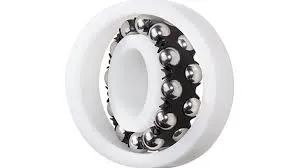
Nov . 20, 2024 19:37 Back to list
thrust roller bearing
Thrust Roller Bearings An Overview
Thrust roller bearings are a crucial component in machinery, providing support and reducing friction between moving parts. These bearings are designed to accommodate axial loads, making them ideal for applications where high axial forces are present. Unlike standard roller bearings that primarily handle radial loads, thrust roller bearings are specifically engineered to manage forces parallel to the shaft.
One of the distinguishing features of thrust roller bearings is their ability to sustain axial loads due to their unique design. They consist of cylindrical rollers that are positioned between a shaft and a housing. This configuration allows them to provide excellent load-carrying capabilities while minimizing wear and tear. The cylindrical rollers have a larger contact area with the raceway, which significantly enhances their load capacity compared to spherical or tapered roller bearings.
Thrust roller bearings come in several variations, including single-row and double-row types. Single-row thrust roller bearings are designed with one row of rollers and are suitable for moderate axial loads. In contrast, double-row thrust roller bearings feature two rows of rollers, providing increased load-carrying capacity and stability. This makes them ideal for heavy machinery applications, such as in construction equipment and marine vessels.
thrust roller bearing

The materials used in the construction of thrust roller bearings play a crucial role in their performance and longevity. Typically, high-carbon chromium steel is employed due to its excellent hardness and resistance to wear. In some cases, bearings may also be made from ceramic materials, which offer even higher resistance to wear and can operate in extreme temperatures, making them suitable for specialized applications.
Proper lubrication is essential for the effective operation of thrust roller bearings. Lubricants reduce friction between the rollers and raceways, ensuring smooth operation and prolonging the bearing's lifespan. Manufacturers often recommend specific lubricants based on the bearing's material and operational environment. Regular maintenance and inspection can also help identify any potential issues early, ensuring that the bearings continue to function optimally.
In summary, thrust roller bearings are vital components in various industrial applications, providing support and stability under axial loads. Their unique design, combined with the right materials and proper lubrication, ensures efficient operation and longevity. Whether in heavy machinery, automotive applications, or other high-load environments, thrust roller bearings play a significant role in enhancing performance and reliability. Understanding their functionality and maintenance needs is essential for anyone involved in machinery design, production, or maintenance.
Latest news
-
Grooved Ball Bearing Design and Functionality
NewsJun.04,2025
-
Concrete Mixer Bearing Load Capacity Testing
NewsJun.04,2025
-
6004 Bearing Dimensions in Robotic Joint Designs
NewsJun.04,2025
-
Advantages of Single-Row Deep Groove Ball Bearings
NewsJun.04,2025
-
Applications of Deep Groove Ball Bearings in Automotive Systems
NewsJun.04,2025
-
Innovations in Bearing Pressing Machine Design
NewsJun.04,2025
